|
String Loop Winder
The string winder is designed to give you a small vice to hold the loose ends of the string, and a hook to allow you to turn the string and form the loop. The distance between the two is calculated to give you a good sized loop, without too much open winding. |
|
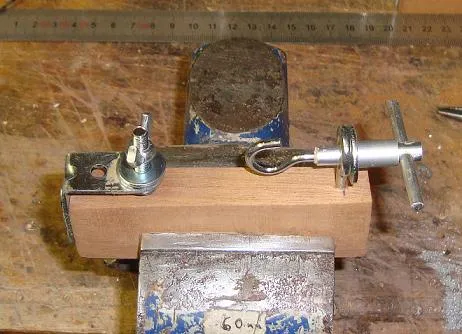
|
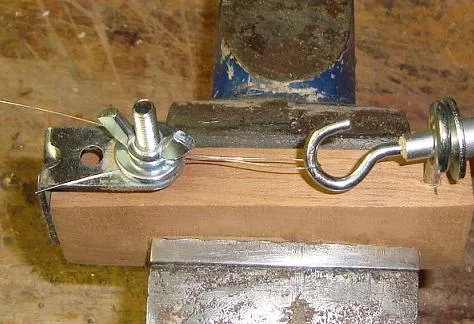
|
| 1. Clamp the string wider wooden block in a vice, and bend over the end of the string where you want the loop to be. | 2. Hook the loop around the hook, and clamp the two string ends into the butterfly vice. |
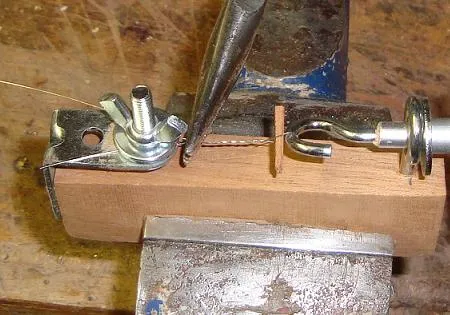
|
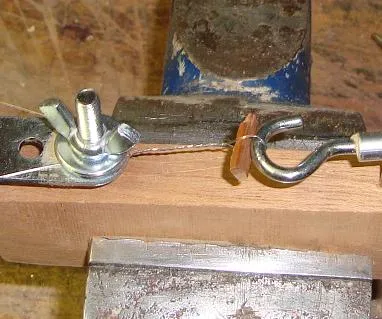
|
| 3. Begin to turn the hook, but insert a small wooden wedge into the loop before it gets too small. It may also be necessary to hold the string with a pair of pliers to stop it slipping in the vice. | 4. Keep winding until the excess string is taken up in the wind. If you continue to wind, the wound string will kink and break, so stop before it kinks. |
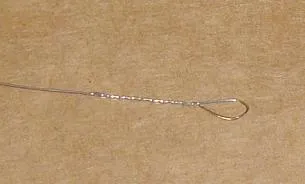
|
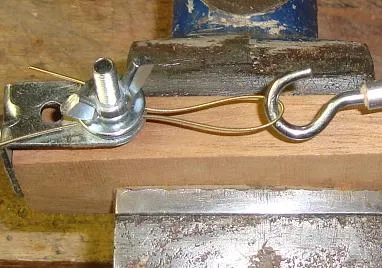
|
| 5. Open the vice slip off the hook, and remove the wedge. Clip off the short end that will be left after winding. | 6. With wound strings it works just as well. Exactly the same process, but you will need many less winds than on an unwound string. |
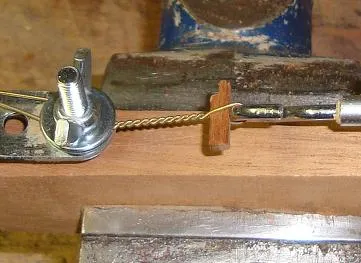
|
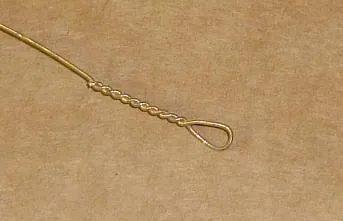
|
| 7. This is about as far as you need to go with a wound string. | 8. It doesn�t seem like too many winds, but it will work perfectly well. |
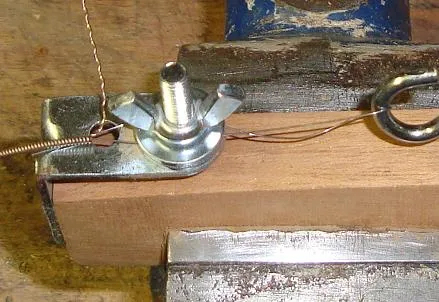
|
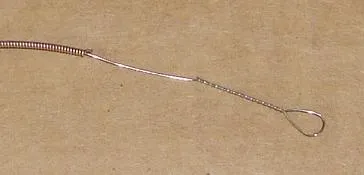
|
|
9. With wound strings above about .045, or where I have a small string hook, I usually strip off the winding before I try winding a loop. Work out how much you need to strip back to go round the hook and through the vice, and grip the string there. Using a pair of pliers, tease off some of the winding at the end of the string, grip the end firmly with the pliers, and PULL. With luck it will unwind it self under pressure back to where you are holding it. Snip off the winding. |
10. They are too difficult to wind when too thick, and the loop is too unwieldy to go over posts or into string hooks. Here is the finished result.... take care how much winding you unwind, this one has rather too much unwound.
|